In Italy, there are almost 6,000 villages that have been abandoned because no one lives there anymore. This is the case of the Ghost Town of Celleno, in the province of Viterbo, progressively abandoned during the 19th century due to devastating earthquakes and landslides.

Surreal and Enchanting
The first reason to visit Celleno is that it is one of the most surreal and enchanting Ghost Towns in Italy–well known as Paese Fantasma (Ghost Town). It is a small village perched on a rocky spur that overhangs a deep valley surrounded by badlands. It is only accessible on foot from a single door defended by Orsini Castle.
Passing the entrance arch and walking towards the main square is a mystic experience. You can see on your right an old tower still standing, and another building with a thin facade and windows facing the void. The breathtaking panorama beyond the precipice is framed by the windows as if it were a painting.
The dilapidated buildings are partially collapsed in the valley or eroded by time. As a whole, they resemble an open-air art museum. The vegetation that climbs among the stones adds an even more nostalgic tone to the whole atmosphere. Narrow stone-paved alleys, tunnels, and little steps lead to old deserted houses in a dreamlike and surreal scenario.
Frozen in Time
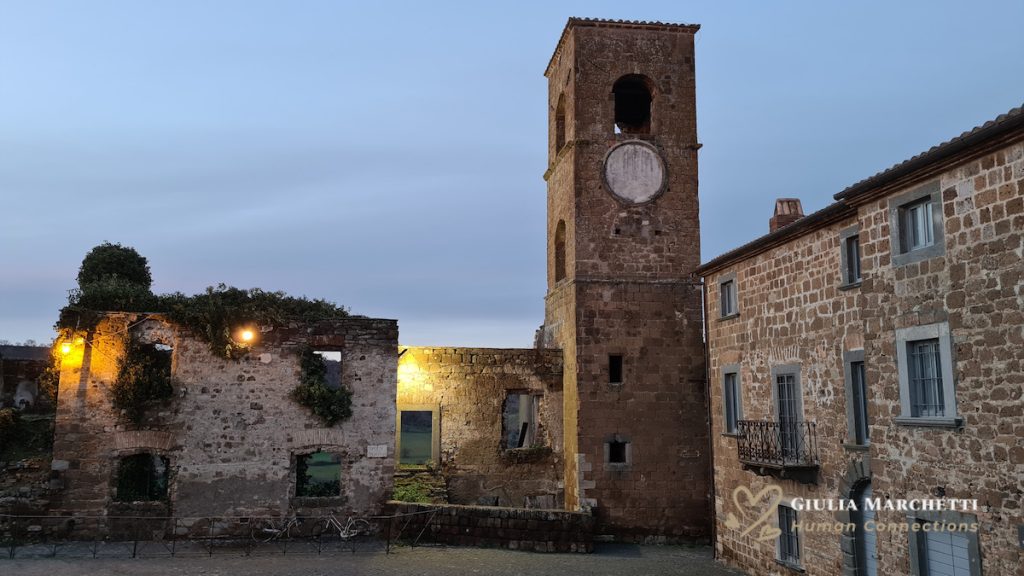
The second reason to go to Celleno is that it is an enchanted place, frozen in time, and uncontaminated by lights, antennas, smog, and noise pollution to which technology has now accustomed us. It is the ideal place to disconnect from the modernity of this century and enter a past, so far and close, that belonged to our grandparents and great-grandparents.
A Bit of Celleno’s History
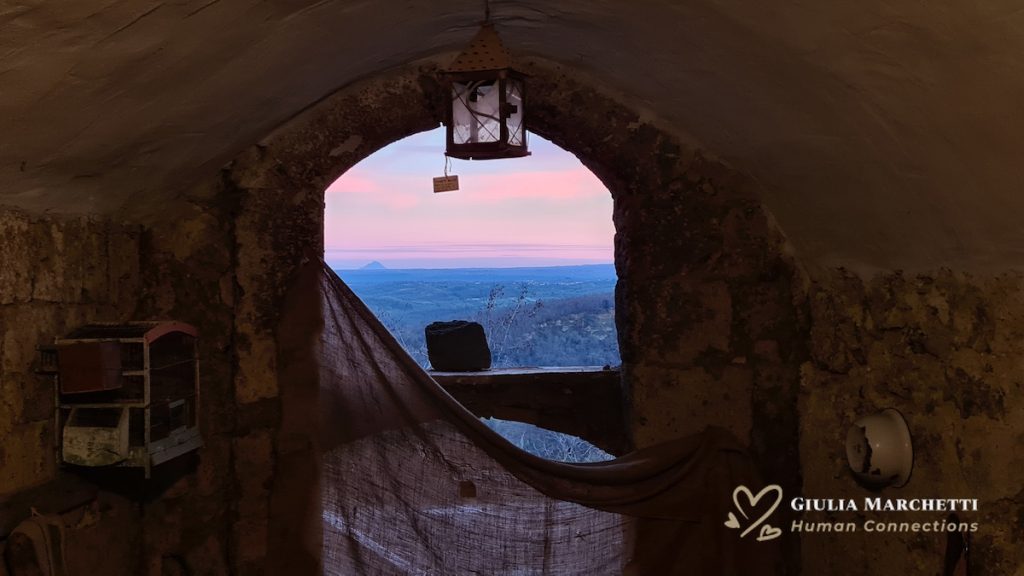
In 1951, the then-President of the Italian Republic, Luigi Einaudi, due to the resistance of the last residents, issued an ordinance to force them to leave their homes. Finally, in 1962, dynamite was used to tear down some of the crumbling buildings. It is also thought it had been done to prevent the most nostalgic from returning to live there. A new town, with the same name, was rebuilt further downstream to host all the population that had left the old village.
Nevertheless, as in other uninhabited villages throughout Italy, Italian and foreign artists have returned to visit it over the years, attracted by the charm of oblivion and decadence. As well as the Italian painter of European fame, Enrico Castellani, who in 1973, decided to buy and restore the Orsini Castle, where he lived until his death in 2017.
Different civilizations have been stratified over the centuries, from the Etruscan era (IV-III century BC), then Roman, Medieval, and so on. And as the universe’s law teaches us, where a civilization falls, another rises. These traces of the past are well visible in the old structures and excavated findings.
This village has a bit of a sad history that can only be softened by the beauty and peacefulness that reign there. Silence, due to its position, is one of the most beautiful protagonists of its scenario.
Museum of Peasant Civilization
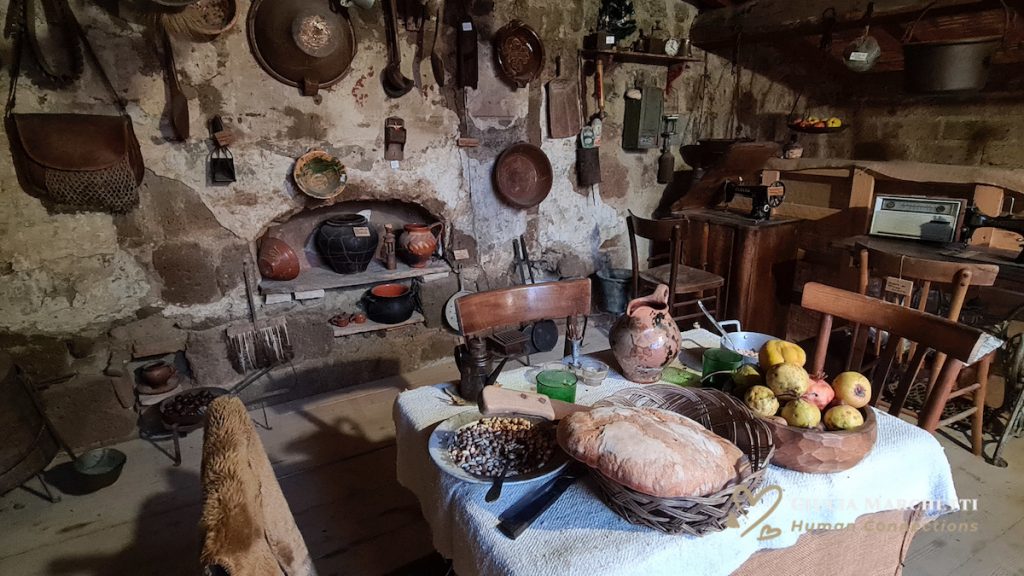
The third reason to go to Celleno is to visit the old buildings that have been turned into a museum of peasant civilization. Thousands of objects, tools, and old stuff have been collected to build environments that recall the life of the 18th/19th centuries: such as a kitchen; cellar; stables; spaces for ancient crafts; and so on.
Here you can have the feeling of meeting your grandparents and great-grandparents at work. Or, while they are sleeping on a bed of straw, warmed by the breath of the animals. It is a journey of the senses and the spirit–a kind of nostalgic hypnosis from which it is difficult to wake up.
All these precious objects have been donated by the inhabitants who live in the new Celleno. Old memories or family heirlooms have merged into a single space to return to the world–a past time that is everyone’s heritage. These donations are a great example of generosity and human connection.
Museo delle Macchine Parlanti (Talking Machines Museum)
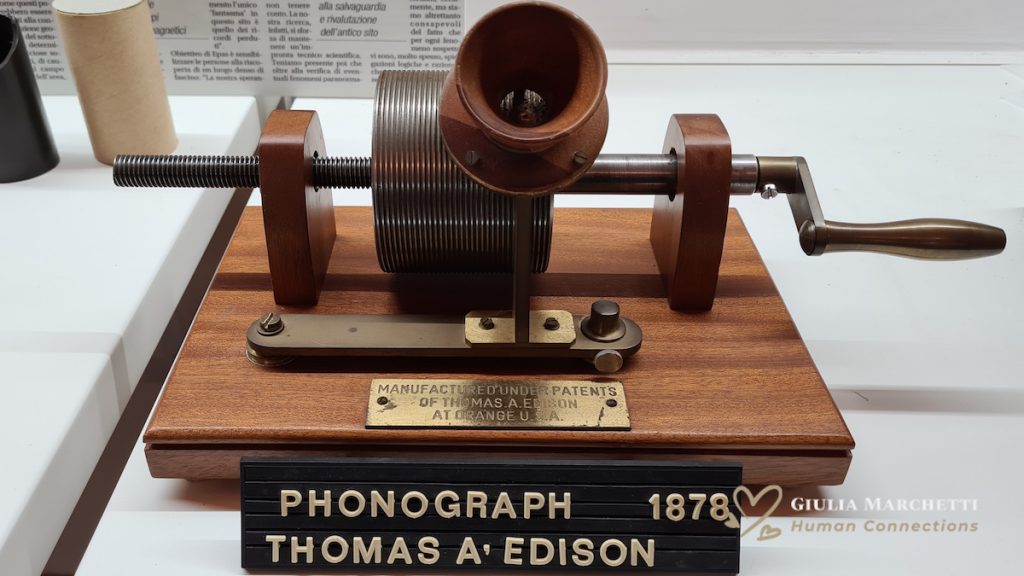
In Celleno it is not just the findings and the ancient objects to evoke the past, but also the sounds produced by gramophones and ancient musical instruments. So, the fourth reason to go to Celleno is to pay a visit to the Talking Machines Museum. You’ll find it in the Church of San Carlo (XV century), right in the main square of this small ghost town.
It was built thanks to the generosity of Mario Valentini, an ex-resident of the new Celleno. Valentini collected a huge amount of old sound machines for passion over the years and then decided to donate them to be enjoyed in the museum by Celleno community and all the visitors.
Sound has the power to give voice to an otherwise muted past. This exhibition is a sonic journey that takes you back 100 years. Each machine is intact and functioning, and the sound reproduced is unique.
Phonographs, gramophones, musical instruments, radios, televisions, and even a juke-box. There is also a turntable with an old Cartolina parlante (Talking postcard)–a colorful postcard with one side to write on and the other to listen to. It produces a nostalgic and romantic melody.
Works of Art
Each piece of this antique collection is also a work of art. They are precious jewels of the past, made of carved or painted woods, precious materials, and wonderful designs.
But among the crumbling buildings, the ruin of a roofless church, evocative rebuilt environments, and the sound of gramophones, certainly, in a ghost town there must be at least a phantom wandering through the streets. Someone swears they saw him. He is the soul of Giovanni Gatti killed by an envoy of Pope Alexander VI (Borgia) for refusing to give back the castle to the Church.
Is it true? Is it a legend? Go to Celleno and find out for yourself.
Path of the Castle and Fairy Tales
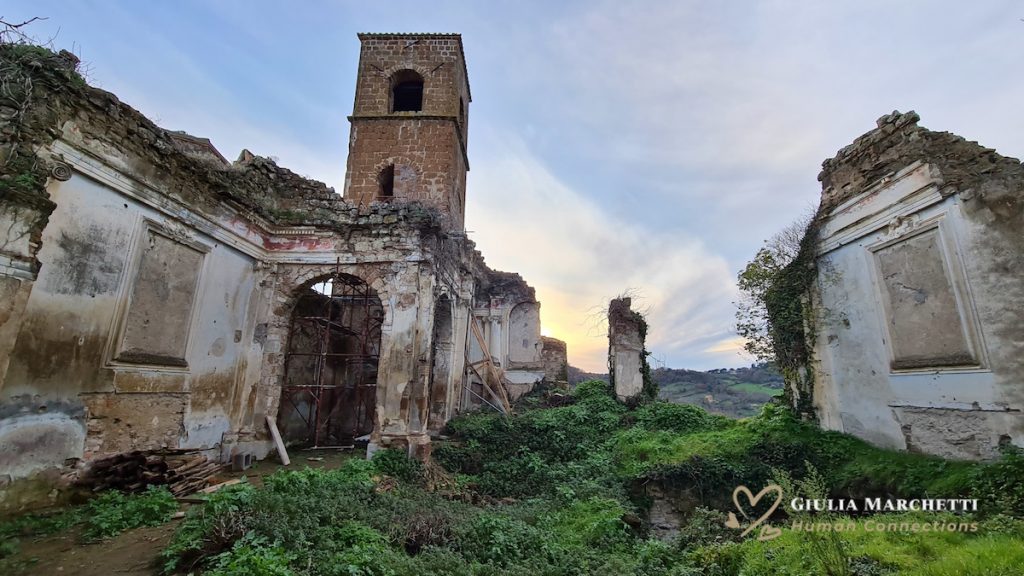
The fifth reason to visit Celleno is to enjoy the Path of the Castle and Fairy Tales. This 5 km trail is of medium difficulty. It starts from the ghost town of Celleno, crosses Sant’Angelo di Roccalvecce (The Fairy Tales Village) and ends in the small village of Roccalvecce with its imposing medieval castle. A journey through the history and spectacular nature.
Note:
Telegraph (The national British daily newspaper) has included Celleno among the 25 most fascinating ghost villages in Italy.
The Ghost Town of Celleno has been included by the FAI (the National Fund of Italy) among the assets to be protected.
Celleno is located in the Tuscia area at about 80 km northwest of Rome and about 15 km north of Viterbo.
Places to Visit In and Around the Ghost Town of Celleno
- Viterbo, a medieval city of about 70,000 inhabitants, well known as the City of the Popes. The main attraction is the enchanting San Pellegrino district which is considered the largest medieval quarter in Europe.
- Civita di Bagnoreggio, well known throughout the world as The Dying City. It is a small village perched atop a hill, surrounded by spectacular valleys and badlands, and with only 15 residents.
- Sant’Angelo di Roccalvecce, known as Fairy Tale Village. It is a small village that has become an open-air museum of popular art. In addition to the attraction of murals portraying fairy tale characters, there are also: installations; sculptures; bas-reliefs and mosaics, which are dedicated to fairy tales; fantastic myths; and legends.
About the Area
Celleno is located in Tuscia, a wonderful area of central Italy, a little north of Rome, and close to the border with Tuscany. It includes the medieval city of Viterbo and a wide constellation of small villages and towns. Each one has its own history, traditions, and dialects. This area is rich in Castles, Historic Houses, and Historical Sites, as well as mountains, lakes, and thermal baths.
You may also enjoy reading:
Top Five Eco-friendly Wellness Resorts and Spas in Italy
Top Five Eco-friendly Hotels in Italy


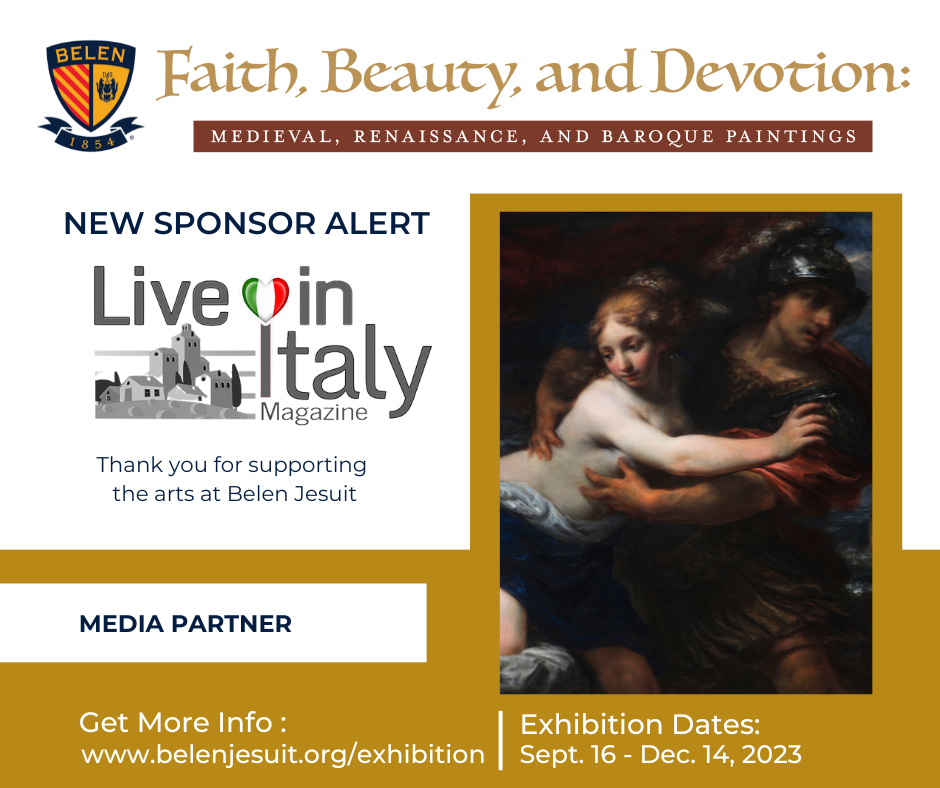

Excellent article Giulia, written with rich and compelling descriptions.
Giulia is an excellent writer. Thanks for reading her article and commenting!
Laurie, thank you so much for your lovely comment!
Thank you for writing. I look forward to visiting Celleno next year.
Thanks Jeff for reading the article and we certainly hope that you get to visit Celleno next year!